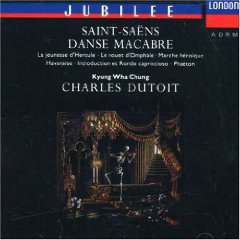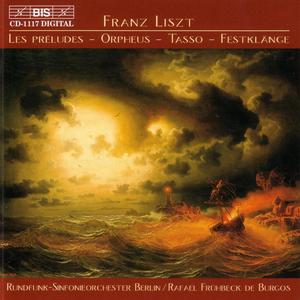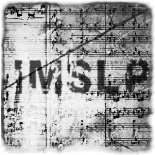The symphonic poem Phaéton by Camille Saint-Saëns, which was discussed in the previous article (Phaéton by Camille Saint-Saëns), is an example of program music. These are compositions to which the composer adds a ‘program’. Both the genre of the symphonic poem and the term program music have been introduced by Franz Liszt (1811-1868). Liszt defined the program as a
preface added to an instrumental composition in which the composer saves the listener from a wrong poetic interpretation of the work, and aims to focus the listener’s attention to the poetic idea of the whole work, or of a specific part of it.
Basically, this means that the composer gives the listener a clue in advance to be able to understand the composition. The program Saint-Saëns added to Phaéton reads:
Phaéton gets control over the sun chariot. But his unable hands lead the horses off the trail. Getting out of its course, the burning chariot approaches the earth. The entire world breaks down in flames, until Jupiter hits the reckless Phaéton with his lightning.
In this symphonic poem, Saint-Saëns follows the story line quite closely. Even the lightning of the king of the gods is identifiable (measure 247 (mp3 – source)). But, this is not always the case. Liszt, for example, wrote more contemplative programs. In the symphonic poem Orpheus (1854) he presents Orpheus as a symbol for Art itself. According to Liszt, the purpose of art is to overcome passions and instincts, and thus to lift humanity to a higher level. In this symphonic poem, it is not possible to find the story line of the myth of Orpheus. It rather is a musical representation of Liszt’s conception of art. We, therefore, must be aware not to take the relation between the music and the program too simplistic. The program is not a ‘literal translation’ of the music, but rather a kind of allegory or parable about the same subject as the music.
Program music as intended by Liszt came to an end in the beginning of the twentieth century. For example, Gustav Mahler was not able to cope with it anymore. His objective was to express ideas in music without needing a text to explain them. The careful listener would understand the meaning of the music anyway. His first symphony (1888) was initially presented as a symphonic poem, but without a program. When the public asked for the meaning of the music, Mahler named the symphony Titan and attached descriptions to the movements. For example, the first movement he called “Das Erwachten der Natur” (The Awakening of Nature). (mp3 – source). But when the public took this description too literally and thought that the symphony merely was about an enjoyable spring scene with hunting horns and bird songs, Mahler removed the descriptions again and gave the movements purely musical names. Thus, he let the music speak for itself, and assumed that the right listener would understand the meaning of the music anyway.
Recommended cd’s
Details: Amazon.com
Details: Amazon.com or Emusic.com
Details: Amazon.com or Emusic.com





